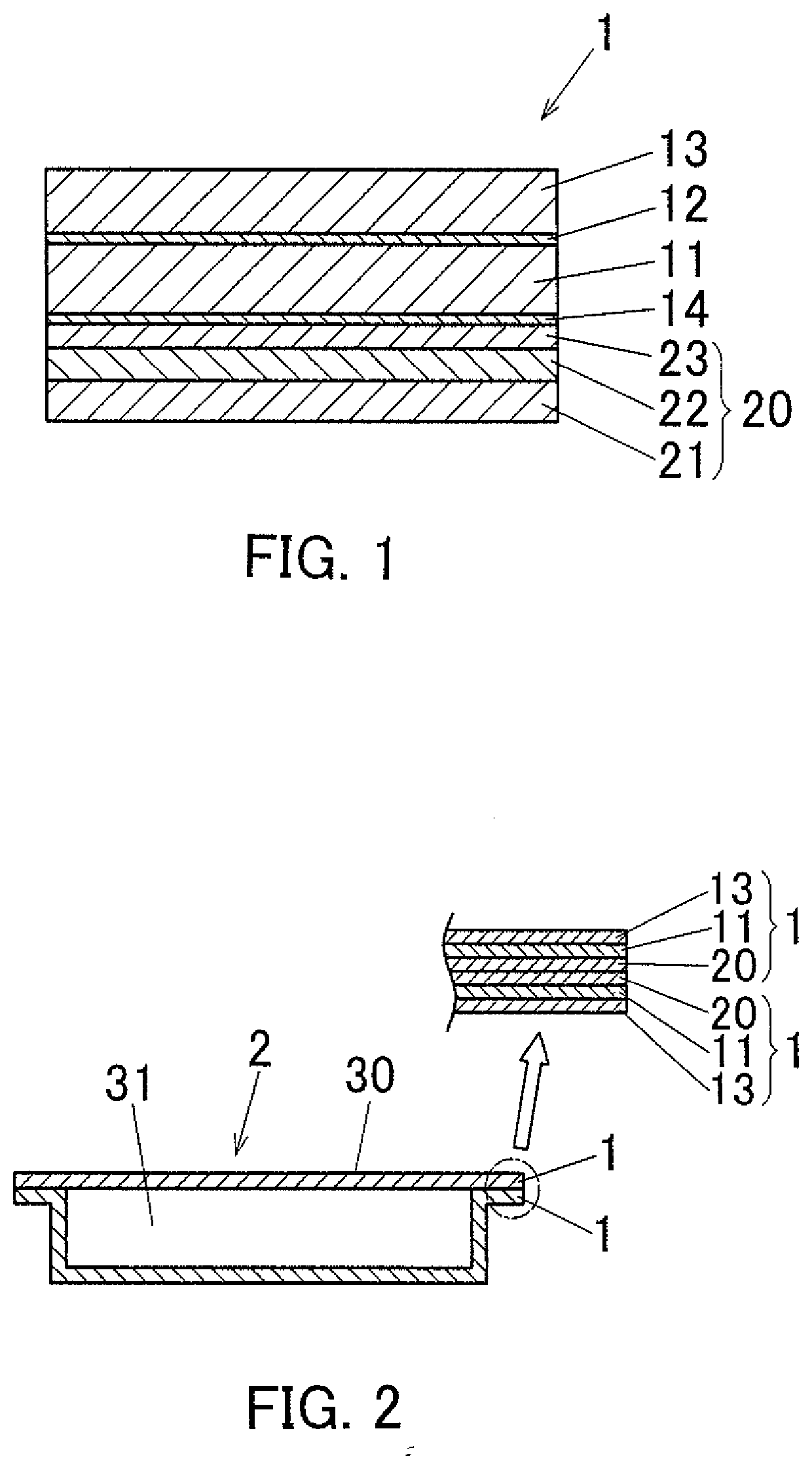Packaging material for battery
a battery and packaging technology, applied in the direction of batteries, cell components, cell component details, etc., can solve the problems of case expansion and burst, risk of ignition, etc., and achieve the effect of reducing sealing strength, preventing bursting or ignition of the case, and reducing sealing strength
- Summary
- Abstract
- Description
- Claims
- Application Information
AI Technical Summary
Benefits of technology
Problems solved by technology
Method used
Image
Examples
examples
[0099]The sealant layers 20 and the packaging materials 1 for a battery having the three-layer structure as shown in FIG. 1 were prepared as Examples 1 to 7 and Comparative Examples 1 to 5.
[0100]In Examples 1 to 7 and Comparative Examples 1 to 5, only the material of the first sealant layer 21 of the sealant layer 20 was different, and the other materials were common. The materials of the barrier layer 11, the base material layer 13, the first adhesive layer 12, and the second adhesive layer 14 were as follows.
[0101]As the barrier layer 11, a chemical conversion coating film was formed in which a chemical conversion treatment solution was composed of polyacrylic acid (acryl-based resin), a chromium (III) salt compound, water, and alcohol, was applied to both surfaces of an aluminum foil made of A8079 having a thickness of 35 μm and then subjected to drying at 150° C. The chromium adhesion amount of this chemical conversion coating film was 5 mg / m2 per side.
[0102]As the base material...
PUM
| Property | Measurement | Unit |
|---|---|---|
| melt flow rate | aaaaa | aaaaa |
| melting point | aaaaa | aaaaa |
| mass % | aaaaa | aaaaa |
Abstract
Description
Claims
Application Information
 Login to View More
Login to View More - R&D
- Intellectual Property
- Life Sciences
- Materials
- Tech Scout
- Unparalleled Data Quality
- Higher Quality Content
- 60% Fewer Hallucinations
Browse by: Latest US Patents, China's latest patents, Technical Efficacy Thesaurus, Application Domain, Technology Topic, Popular Technical Reports.
© 2025 PatSnap. All rights reserved.Legal|Privacy policy|Modern Slavery Act Transparency Statement|Sitemap|About US| Contact US: help@patsnap.com

